
Amelia Meman, ’15, is the program coordinator in the Women’s Center. She has worked in the Women’s Center as an intern, a student staff member, a volunteer, a part-time coordinator, and now as a full-time staff member. Throughout this tenure, Amelia has attended every Take Back the Night (and is looking forward to attending many more).
Among the fraught ethical tensions that anyone negotiates in their lives, there is one that the Women’s Center constantly must work through:
Are we honoring stories of trauma or are we passively consuming tragedy?
This is a conflict that comes up most often when we begin planning and setting up for our sexual violence-related events. We have to ask ourselves during Take Back the Night (TBTN): is this an event that is empowering for survivors and victims? Or is it spotlighting stories that are shocking and uncomfortable for an eager audience? Are we listeners observing moments of healing or are we spectators in awe of what trauma can be?
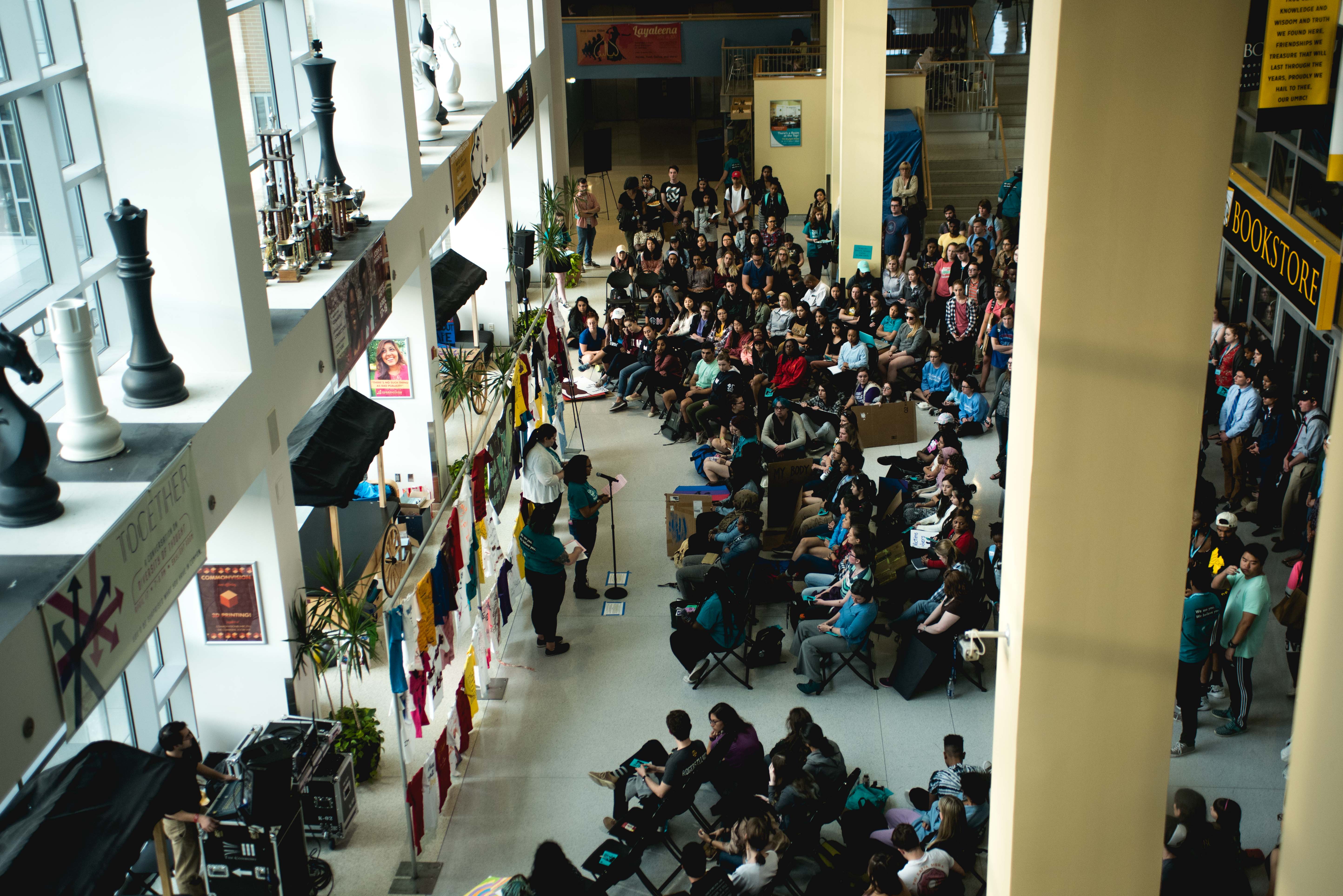
Now, we realize that we can’t control how participants are taking in the material we offer, but we can try like hell to build a context to our event that encourages folks to act as witnesses to a difficult and powerful process. Hence this blogpost.
Take Back the Night is an emotional and incredible event. As a staff member and an alumna, I have been to every TBTN since it was renewed in 2014, and every year, I am aware of the way the survivor speak out shifts the gravity in the room. I know there are tears and tense muscles and people holding one another–partially because I’ve been in that same position. I know that in the march that follows the speak out, I yell so so loud with this big chorus of powerful people and it is the closest I come to righteousness. The catharsis of shifting the emotional weight in my heart to my lungs and into the night air, it’s a feeling that you don’t soon forget.
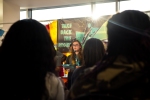
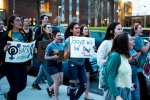
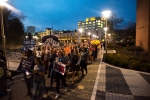
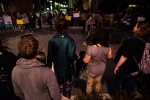 That said, I’ve also been behind the camera for many of my TBTN’s and I know, as an artist, what lengths we can go to in order to get that shot that distills the moment as if the chant could echo through whatever gelatin or pixel displaying utility you’re using. Get that shot. Capture that moment. Frame it. Click. Shutter. Stop.
That said, I’ve also been behind the camera for many of my TBTN’s and I know, as an artist, what lengths we can go to in order to get that shot that distills the moment as if the chant could echo through whatever gelatin or pixel displaying utility you’re using. Get that shot. Capture that moment. Frame it. Click. Shutter. Stop.
I get it.
But just as the Women’s Center frets about building a moment of witnessing rather than consumption, we must also ask our photographers and our artists to consider how they’re documenting this world.
As we get ready for another Take Back the Night, we meet and Jess is beleaguered: “Just please don’t be that guy running and hanging off of light posts with a camera in my face,” referring to the antics of some eager photojournalists who took the 2018 Take Back the Night march by storm. People with cameras ran in and out and through and about the march, and it led us as organizers to question whether or not this was the sort of event we wanted to organize.
Were we getting people together simply for the right Instagram grid?
Were those who were brave enough to tell their stories being minimized to the portrait of tears and traumatization?
Did these folks weaving and mending their way through the march even know what it was that brought us all together and why our voices were high with urgency?
Are we staging tragedy for people to consume? Are survivor stories a tragic movie montage–to feel things that we aren’t typically used to feeling?
There’s a responsibility here, as a narrator or a creator, to honor the folks whose stories we are trying to enliven. We teeter on that tension I spoke of earlier, between exploitation and empowerment. So as we move into another TBTN and another year of difficult publicly told truths, I hope that we can learn how to honor and respect the stories that are shared among us.
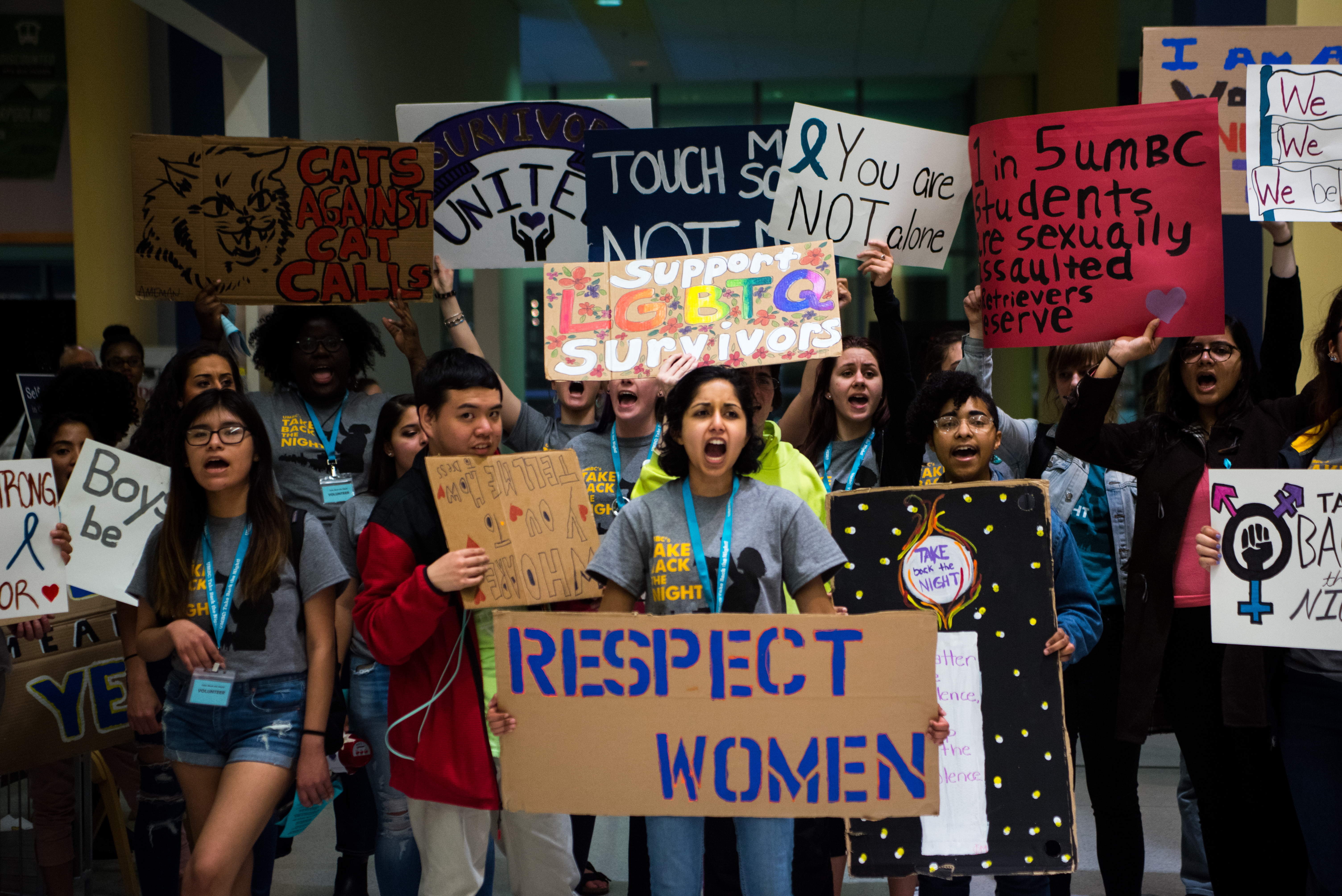
Some simple questions for all of the photographers out there, looking to document things like Take Back the Night and other important movements in our world:
Why are you taking pictures?
Where are you posting them?
If you had to write a caption, what would it say?
Who are you taking a picture of? Are they in a state you would want to be captured in?
Do you understand what this event is about and the goals?
How can you ensure that your creative work builds off of organizer goals?
Did you ask to take the picture? If you didn’t, should you?
Ultimately, this issue is one of exploitative objectification versus humanizing empowerment/embodiment. Viewing real human conflict, sadness, trauma does things to us. It might help us through our own shit. It might provoke a piece of ourselves we’ve never been in touch with. Either way, let’s make sure that in our reception, we are viewing, listening, etc. from a place of equal footing, rather than from the top down. Reach out, not down to the folks who have different experiences from you, and if you plan on taking their picture–hold up your mirror first.
This year, for Take Back the Night, the Women’s Center is assigning press passes to photographers. We hope this is a way to hold artists and journalists accountable to our mission, and create a firmer understanding of the context that brings us all together. If you’re interested in acquiring a press pass, email us at womenscenter@umbc.edu.
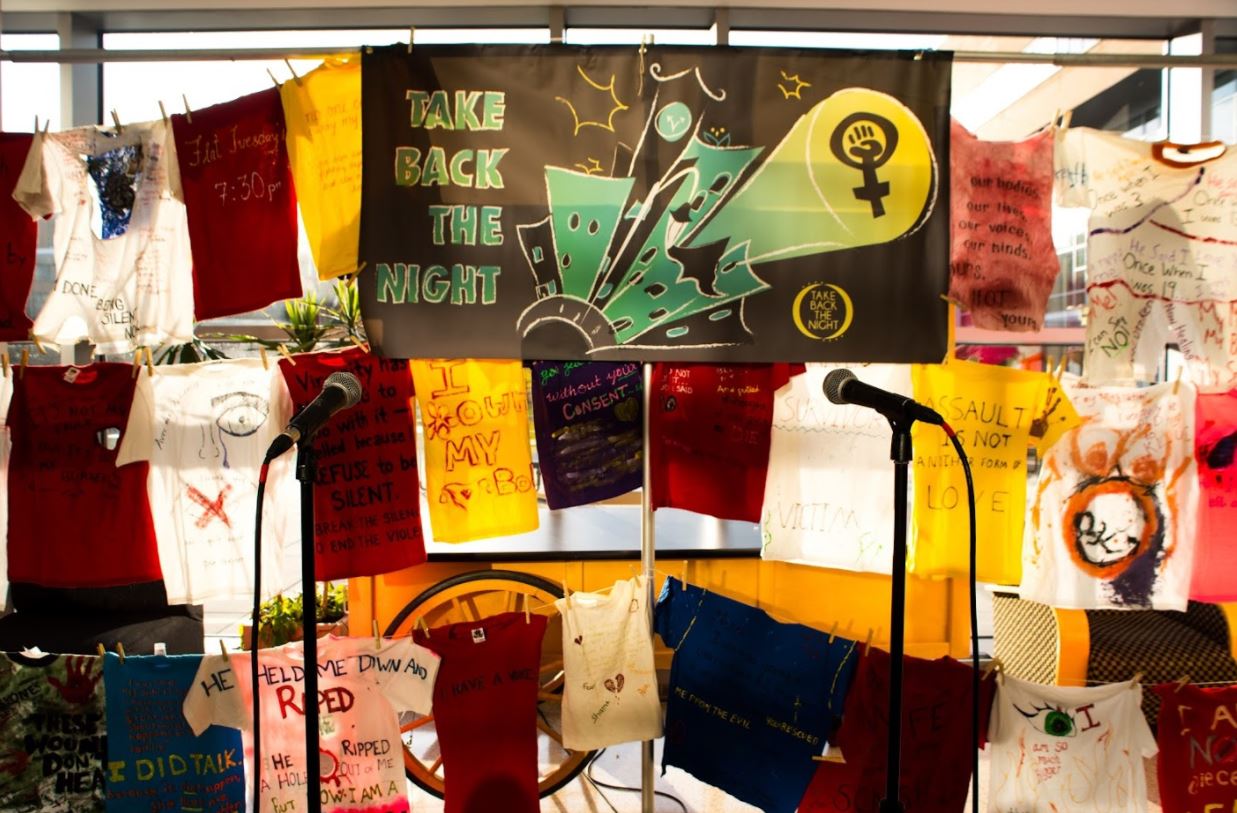
Further reading/viewing/listening:
7 with VII: Ethics in Photojournalism, Q&A with photojournalists Ron Haviv, Maciek Nabrdalik, Stefano De Luigi, Davide Monteleone, Ashley Gilbertson, Ed Kashi and Arthur Bondar
A Thousand Stakes: Photojournalism and Exploitation, Teresa Mathew
The Colonialism of Photojournalism, Clary Estes
Inspiration porn and the objectification of disability, Stella Young at TEDxSydney 2014





